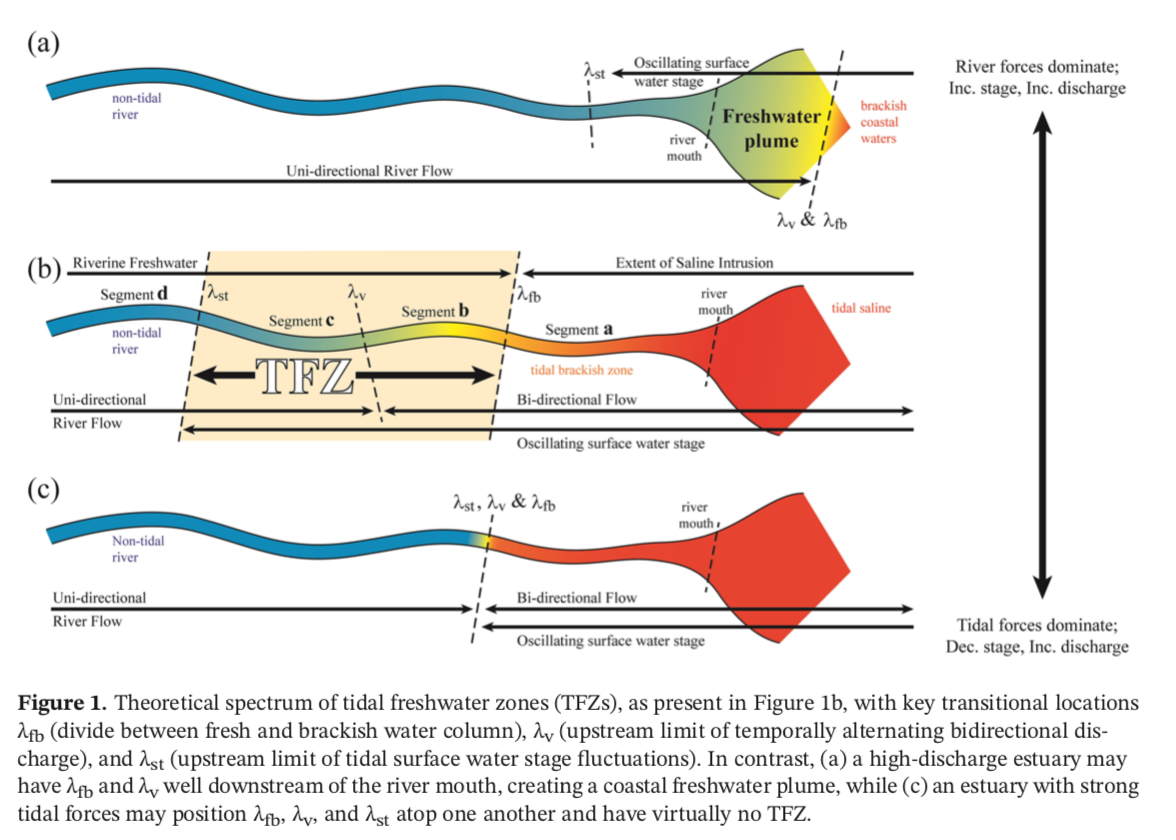Defining the riverine tidal freshwater zone and its spatiotemporal dynamics
ABSTRACT: Tidal freshwater zones (TFZs) are transitional environments between terrestrial and coastal waters. TFZs have freshwater chemistry and tidal physics, and yet are neither river nor estuary based on classic definitions. Such zones have been occasionally discussed in the literature but lack a consistent nomenclature and framework for study. This work proposes a measurable definition for TFZs based on three longitudinal points of interest: (1) the upstream limit of brackish water, (2) the upstream limit of bidirectional tidal velocities, and (3) the upstream limit of tidal stage fluctuations. The resulting size and position of a TFZ is transient and depends on the balance of tidal and riverine forces that evolves over event, tidal, seasonal, and annual (or longer) timescales. The concept, definition, and transient analysis of TFZ position are illustrated using field observations from the Aransas River (Texas, USA) from July 2015 to July 2016. The median Aransas TFZ length was 59.9 km, with a late summer maximum of 66.0 km and a winter minimum of 53.6 km. The TFZ typically (annual median) began 11.8 km upstream from the river mouth (15.4 km winter/11.2 km summer medians) and ended 71.7 km upstream (69.0 km/77.2 km). Seasonally low baseflow in the Aransas River promoted gradual coastal salt encroachment upstream, which shortened the TFZ. However, sporadic large rainfall/runoff events rapidly elongated the TFZ. The TFZ definition establishes a quantifiable framework for analyzing these critical freshwater systems that reside at the nexus of natural and human‐influenced hydrology, tides, and climate.


